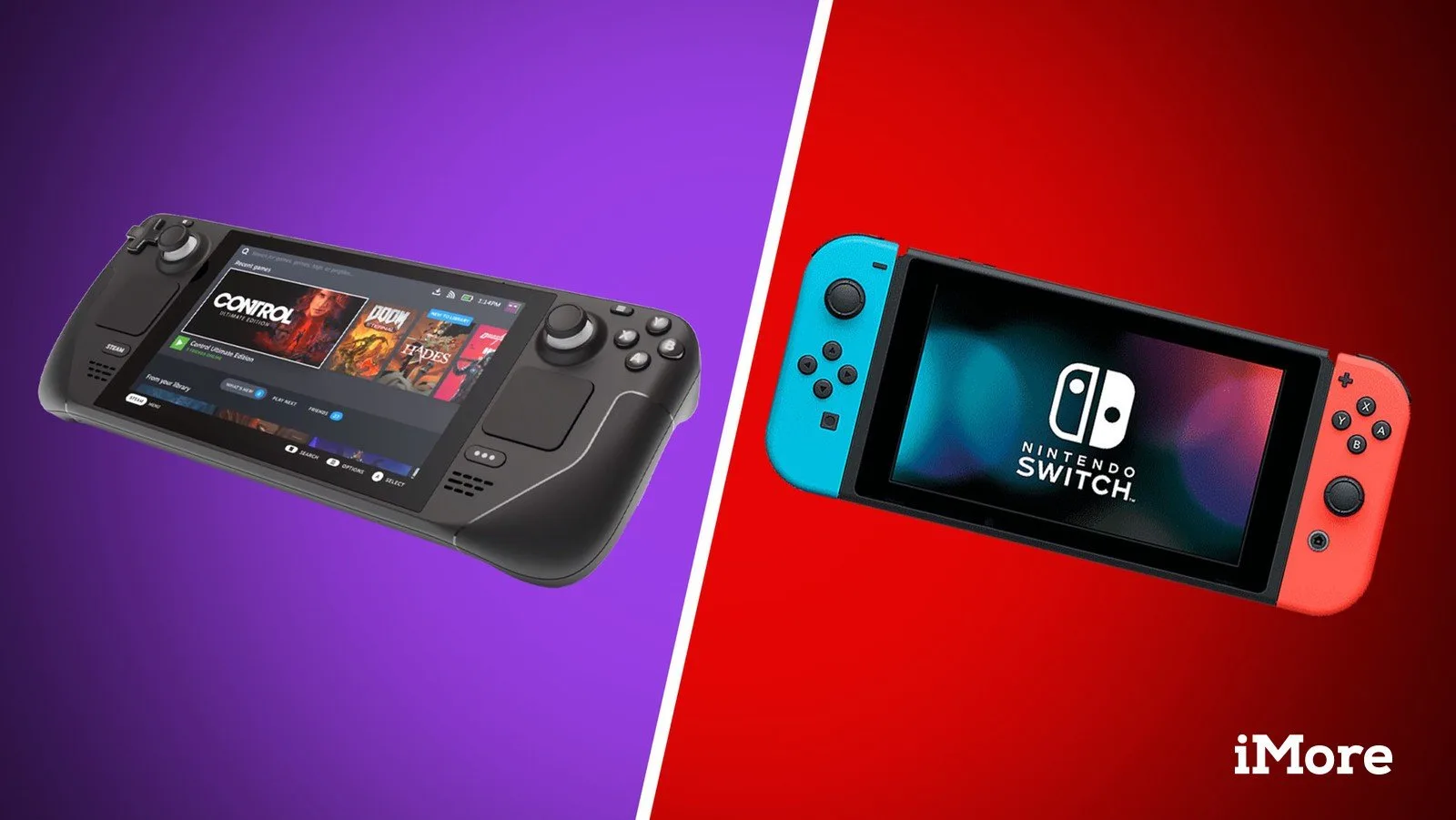Comparison between the Steam Deck and the Nintendo Switch

Steam Deck vs Nintendo Switch: Detailed Comparison
Recently, Valve announced the Steam Deck, a powerful handheld gaming PC, in July. It offers impressive specifications for its price. The most natural comparison is with the Nintendo Switch, especially the new OLED version, which is similarly priced to the entry-level Steam Deck.
Size

The Steam Deck is approximately 7% larger than the standard Nintendo Switch, which may be an advantage or disadvantage depending on hand size. Valve has designed the Steam Deck to feel comfortable despite its larger dimensions, as confirmed by early hands-on demos.
Screen

The standard Nintendo Switch features a 720p plastic screen that lacks durability and clarity. The new OLED model improves on this with a higher-quality OLED display for $50 more. The Steam Deck offers an 800p IPS screen with an anti-glare option on higher models. While neither device provides a cutting-edge display, the Steam Deck’s glass surface and IPS panel offer better durability and clarity compared to the standard Switch screen.
Controls

The Nintendo Switch uses a hybrid control system similar to Xbox with motion controls reminiscent of the Wii. This allows developers to experiment with unique control schemes. The Steam Deck also adopts an Xbox-like layout but adds two touchpads that simulate mouse movements, making it suitable for genres like RTS games that are challenging to play with traditional controllers.
Gaming Experience

On paper, the Steam Deck outperforms the Switch in almost every aspect. However, Nintendo focuses on exclusive games, which remain unmatched in quality and appeal. That said, the Steam Deck offers access to older Nintendo titles through emulators, giving it an edge in terms of library variety. For instance, only one device in this comparison can run The Legend of Zelda: Ocarina of Time via emulation, and that’s the Steam Deck.
Performance

Third-party games often struggle on the Switch, with low resolution (as low as 360p), inconsistent frame rates, and inferior graphics compared to the Steam Deck. Valve promises a stable gaming experience at 800p and 30FPS in handheld mode. The Steam Deck also acts as a portable PC, allowing seamless access to your Steam library. You can continue playing your games from where you left off on your primary PC, a feature not available on the Switch.
Conclusion
On paper, the Steam Deck offers better value for its price compared to the Switch. However, real-world performance and user experience will ultimately determine its success. Once the Steam Deck is officially released, we’ll be able to provide a more detailed review and comparison with its competitors.

